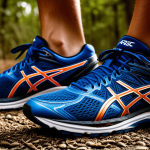Importance of Senior Stairway Safety
Stairways pose significant safety challenges for seniors, warranting attention to preventing falls. It’s noteworthy that, according to various studies, an alarming percentage of falls involving seniors occur on stairways, highlighting the importance of stair safety. Therefore, understanding the common hazards within stairway design becomes crucial.
Often, stair design may inadvertently contribute to accidents. For example, uneven steps or surfaces, lack of adequate handrails, and poor lighting rank among frequent hazards. Addressing these issues is vital, as preventing falls can protect seniors’ health and preserve independence. When a senior experiences a fall, the consequences may result in fractured bones or worse – leading to a loss of autonomy.
Also to read : Revitalize Your Nights: Essential Sleep Strategies for Seniors Battling Chronic Insomnia
The societal impact of these incidents extends beyond personal injury by burdening healthcare systems with increased care needs. Moreover, falls can significantly affect a senior’s confidence, deterring them from moving freely within their home environment. As such, raising awareness about the importance of stair safety is essential. Emphasising modifications and enhancements can mitigate risks and ensure a safer living space for seniors. By investing in senior stairway safety, a more secure and supportive environment can be created, ultimately enhancing their quality of life.
Essential Safety Features for Stairways
In enhancing Senior Stairway Safety, incorporating effective Safety Features such as Handrails and Non-Slip Surfaces is paramount. These features significantly reduce the risk of accidents.
Also to read : Revitalize Senior Well-Being: Transform Your Balance and Coordination with Tai Chi
Installing Handrails
Handrails are crucial in ensuring safe navigation for seniors. It’s imperative to follow guidelines for optimal handrail height, ideally 34 to 38 inches above stair nosings. Selecting robust materials, like stainless steel or hardwood, ensures durability. Consistent installation in all staircases within a home maintains a uniform level of security. Properly installed handrails offer the necessary support, enhancing stair safety.
Non-Slip Treads
Installing non-slip treads on stairs is another essential intervention to reduce slip risks. Suitable materials include rubber, adhesive strips, and carpeting. These materials increase surface friction, improving footing. When installing, ensure non-slip treads cover the entire step and are securely fastened to prevent accidents. Regular maintenance, such as checking for wear or loose positions, is key to long-term safety.
Adequate Lighting
Proper lighting is critical for stairway safety, aiding visibility during ascent and descent. LED strip lights are effective, offering consistent illumination without excessive glare. Position lighting at a height that avoids casting shadows on stairs. Regular replacement of bulbs and inspection of fixtures guarantees maintained light levels.
Techniques for Navigating Stairs Safely
Understanding effective strategies for Navigating Stairs is crucial in reducing fall risks and maintaining Senior Stairway Safety. It’s imperative for seniors to adopt Safe Practices when ascending or descending stairs. Key techniques include maintaining a slow and steady pace, using handrails for balance, and ensuring footwear grips effectively. Seniors should focus on each step, avoiding distractions.
Caregiver Techniques are vital in supporting seniors during stair navigation. Caregivers should offer physical assistance when necessary and ensure the surrounding environment is safe. Training in proper assisting methods can enhance both the caregiver’s and senior’s confidence. Monitoring for changes in the senior’s mobility aids in adapting assistance as needed.
Balance and stability play essential roles in Preventing Falls. Implementing exercises to strengthen muscles and improve coordination can be beneficial for seniors. Simple exercises, like standing on one foot or using balance boards, can significantly improve stability.
Incorporating these practical techniques not only ensures a safer stair navigation experience but also supports seniors’ independence. Engaging caregivers and seniors in regular discussions about safety practices can reduce anxiety associated with stair usage and bolster safety confidence.
Home Modifications to Enhance Stair Safety
Enhancing Senior Stairway Safety through Home Modifications can significantly improve accessibility and prevent falls. Implementing Stair Adaptations can make homes safer and more comfortable for seniors.
Installing Stairlifts
Stairlifts offer practical mobility solutions by providing a safe, comfortable seated transport along stairways. Various options, including straight and curved designs, accommodate different stair configurations. They promote independence while reducing fall risk. Although initial costs vary, discounts or insurance coverage can alleviate expenses. Community support programs may also offer financial assistance for installing stairlifts, an investment guaranteeing long-term safety.
Clear Pathways and Decluttering
Maintaining clear pathways ensures unobstructed access to staircases, vital for stair safety. Routinely remove clutter, ensuring safety without tripping hazards. Establishing an organized system for items near staircases prevents accidents. Regularly evaluate and adjust the environment to maintain a hazard-free area, fostering a secure setting for seniors.
Alternative Solutions
In addition to stairlifts, consider alternative modifications, such as ramps or wider entryways for improved navigation. Adaptations, including grab bars or assistive devices, enhance stability. Community assessments help identify appropriate safety measures. Elevating home accessibility empowers seniors, promoting autonomy and confidence in their living spaces.
Expert Recommendations and Resources
Ensuring optimal Senior Stairway Safety requires comprehensive guidance and resources. Expert Recommendations are invaluable, particularly insights from occupational therapists who specialise in fall prevention. These professionals offer tailored advice on adapting home environments to meet the mobility needs of seniors, suggesting modifications that significantly enhance safety on stairways.
In addition to expert insights, various Safety Resources are available to assist both seniors and caregivers. Organisations like the National Institute on Aging provide informative materials addressing compliance with safety standards. These resources often include step-by-step guides for making home adjustments.
Community programs also play a crucial role in supporting fall prevention education. Local healthcare providers or community centres frequently run workshops that cover practical strategies for reducing fall risks, such as balance exercises or proper footwear selection. By participating in these programs, seniors and caregivers gain knowledge and confidence to implement safety measures effectively.
Engaging with a network of resources empowers seniors, reinforcing their autonomy and ensuring their living environments are as secure as possible. Investing in ongoing education enhances the quality of life for seniors and supports caregivers in their essential roles.






